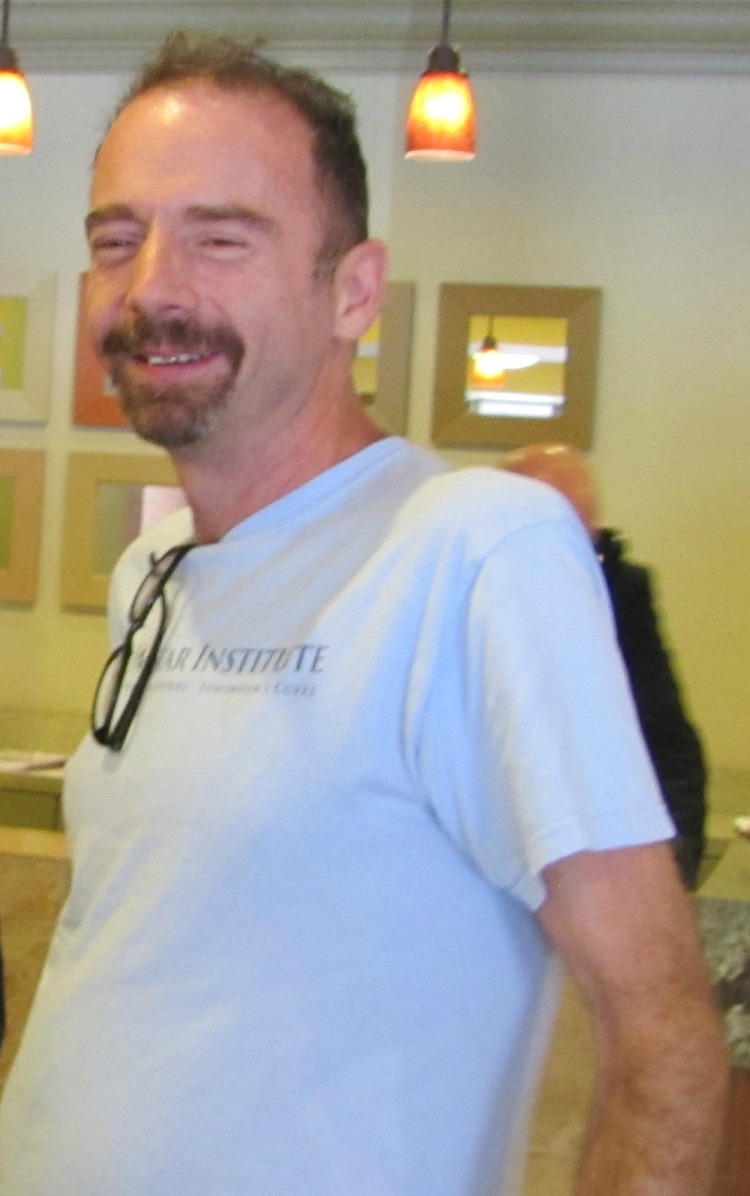Timothy Ray Brown, the first man cured of HIV, is desperate for coffee. Thin, dark-haired and somewhat disoriented, he’s standing in the lobby of the Silver Cloud Hotel on Broadway, having just flown into town from Las Vegas, where he has been living. He’s a Seattle native, and he’s come back to live for the summer with his mom—and to participate in a series of events starting today that highlight the intense effort going on here and around the country to find an HIV cure for the masses.
Someone at the hotel has told him about Caffe Vita, and so he makes his way there with three members of a foundation he has formed to support the work of HIV research. He’s excited as he takes in the sights of his old stomping ground in Capitol Hill. “The Comet—It’s still around!” he proclaims as he passes the landmark tavern.
But he walks haltingly and his speech is slightly slurred. When he sits down at the cafe and finally gets the espresso he’s been craving, he explains the still fairly precarious state of his health.
In 1995, Brown was diagnosed with HIV. He was in his 20s and living in Germany, having left Seattle in 1991 to have a prolonged European adventure that had him, at times, teaching English, working in a cafe and translating from German to English. He started taking HIV medication and was doing well, his regimen getting easier as new and more powerful drugs were developed. (See last month’s SW cover story tracing the amazing advances in HIV research and their effect on one woman’s life.)
Then, in 2006, still living in Germany with his then boyfriend, he got a new diagnosis: acute myeloid leukemia. Contrary to some reports, he says the leukemia was not brought on by HIV. But the cancer ultimately had implications for the virus in his body. Because of the leukemia, Brown needed a stem cell transplant, and his German doctor got the idea of looking for a donor with cells that contained a rare mutation making them resistant to HIV.
Such a donor was found and the operation was performed in 2007. It worked according to plan: repeated blood tests failed to find any HIV in Brown’s body–resulting in a frenzy of scientific and media interest around the world in the person who was for years only identified as the “Berlin patient.”
Yet, as Brown relates: “It turned out that the HIV was easier to cure than the leukemia.” He ended up needing yet another transplant, which left him so weak that he was initially unable to walk. A violent mugging in 2009, resulting in a concussion, complicated his recovery, which is ongoing. He likens his condition to dealing with the aftereffects of a stroke.
Still, he decided to jump into the world of HIV advocacy last year, launching the Timothy Ray Brown Foundation of the World AIDS Institute. He says he wants all HIV patients to be cured, and in “much easier way than what I went through.”
And in the world of HIV, Brown carries star power. The Fred Hutchinson Cancer Research Center is using the occasion of his visit to spotlight its work on developing a cure. The center is holding a a scientific forum today and a panel discussion for the public tomorrow night (7 p.m., Seattle University’s Pigott Building), both of which Brown is attending.
The Hutch does have quite a story to tell. Over the past three years, a team of researchers has developed what Keith Jerome, the molecular virologist co-heading the team, calls “genetic scissors.”
Really, the scissors is a protein, Jerome explains. In nature, it lives in yeast, the run of the mill kind you use to make bread. When it comes across a specific sequence of the yeast’s DNA, the protein causes a chemical reaction that causes a break, which produces a little deletion of genetic material. Jerome compares the deletion to what used to happen when a tear appeared in an old-fashioned film reel and you spliced it together with tape. Despite the fix, a tiny bit of the film was lost.
What if you trained that genetic scissors to look for another DNA sequence—either HIV or the proteins in cells that act as receptors for the virus? That was the question that the Hutch’s scientists asked. If they could do that, they realized, the scissors could snip out the damaging DNA and a cure would be at hand.
An early experiment, seeing whether the scissors would delete HIV if the virus was combined with the right yeast DNA, showed promise. Jerome calls it his “biggest Eureka moment” in his 20 odds years of scientific research.
The next step was to get the scissors to find HIV and its receptor cells without the involvement of yeast. Jerome says that has now been accomplished, and his team is gearing up for clinical trials.
This potential cure—one of three approaches being worked on around the country—would be much more widely available than the kind of stem cell transplant that Brown had. That was a risky, expensive procedure that only makes sense if someone has cancer as well as HIV.
Yet Brown continues to serve as an inspiration. Says Jerome, “Timothy has been the embodiment of what we’re trying to do.”








